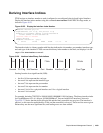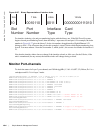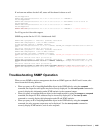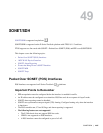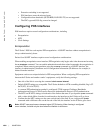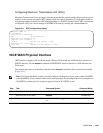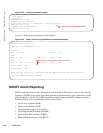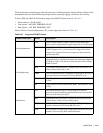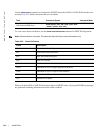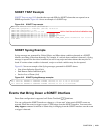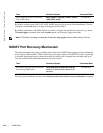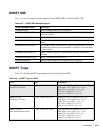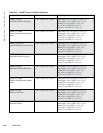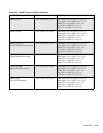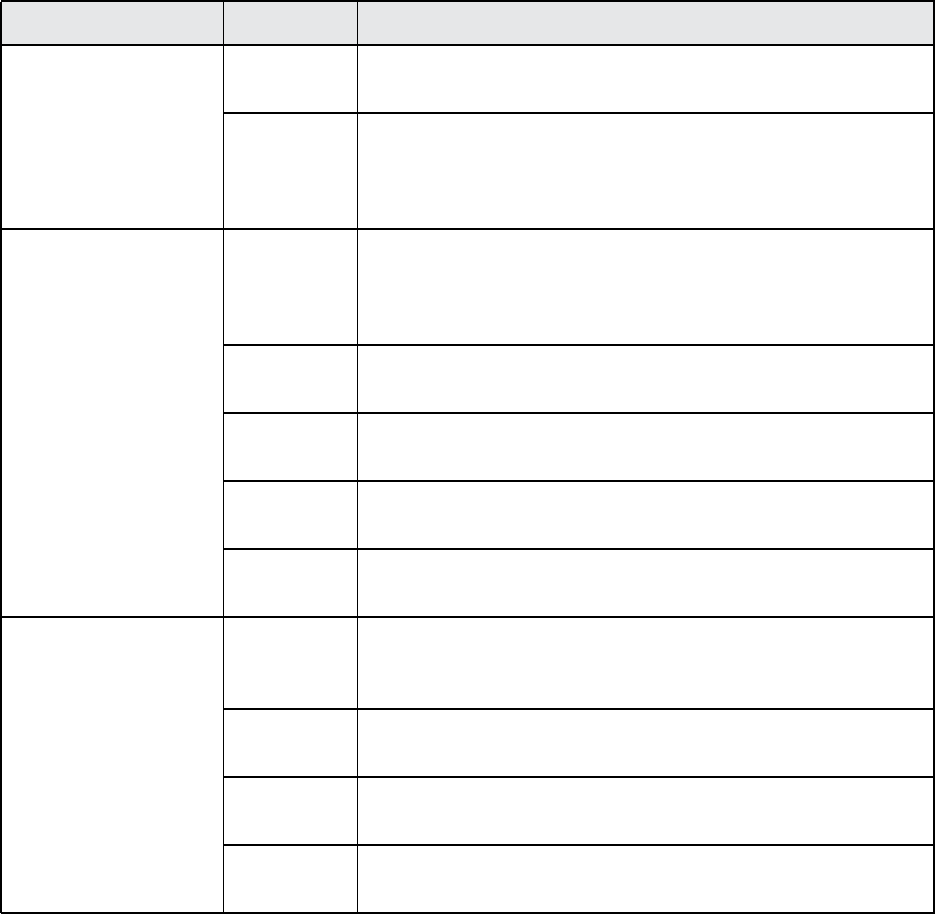
SONET/SDH | 1011
While performance monitoring provides advanced alert of link degradation, alarms indicate a failure. Fault
management involves alarm monitoring and generation, reporting, logging, correlation, and clearing.
E-Series POS and 10GE WAN interfaces support the SONET alarms shown in Table 49-1:
• Section alarms—SLOS, SLOF
• Line alarms—AIS, RDI, FEBE(REI), SD, SF
• Path Alarms—AIS, RDI, FEBE(REI), LOP
Since E-Series is Terminal Equipment (TE), it must support the alarms in Table 49-1.
Table 49-1. Supported SONET Alarms
SONET/SDH Layer Alarm Description
Section/Regenerator
LOF Loss of Frame condition—when a severely errored frame (SEF)
defect on the incoming SONET signal and persists for 3 milliseconds
LOS Loss of Sync condition—when an all-zero pattern on the incoming
SONET signal last 19 (+/-3) microseconds or longer. This defect
might also be reported if the received signal level drops below the
specified threshold.
Line/Multiplexing
AIS Line Alarm Indication Signal is sent by the section terminating
equipment (STE) to alert the downstream line terminating equipment
(LTE) that a LOS or LOF defect has been detected on the incoming
SONET section.
RDI Line Remote Defect Indication is reported by the downstream LTE
when it detects LOF, LOS, or AIS.
FEBE Line Far End Block Errors (accumulated from the M0 or M1 byte) is
reported when the downstream LTE detects BIP (B2) errors.
SD Signal Degrade is sourced from B2 BIP (BER). The threshold is fixed
at 10^6.
SF Signal Failure is sourced from B2 BIP (BER). The threshold is fixed
at 10^3.
Path/Section
AIS Path Alarm Indication Signal is sent by the LTE to alert the
downstream path terminating equipment (PTE) that it has detected a
defect on its incoming line signal.
RDI Path Remote Defect Indication is reported by the downstream PTE
when it detects a defect on the incoming signal.
FEBE Path Far End Block Errors (accumulated from G1 byte) is reported
when the downstream PTE detects BIP (B3) errors.
LOP Loss of pointer is a result of an invalid pointer (H1,H2) or an excess
number of new data flag (NDF) enable indications.



